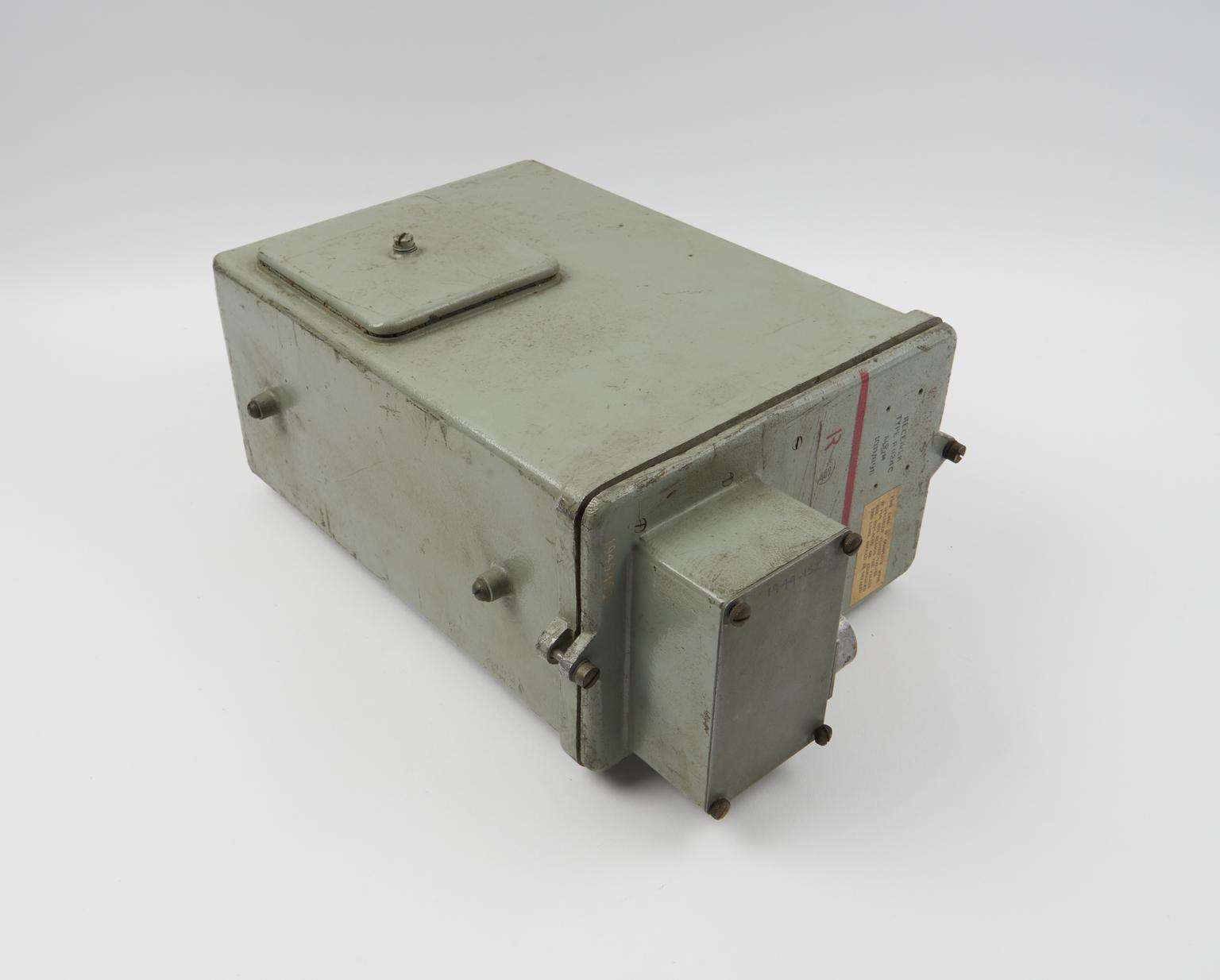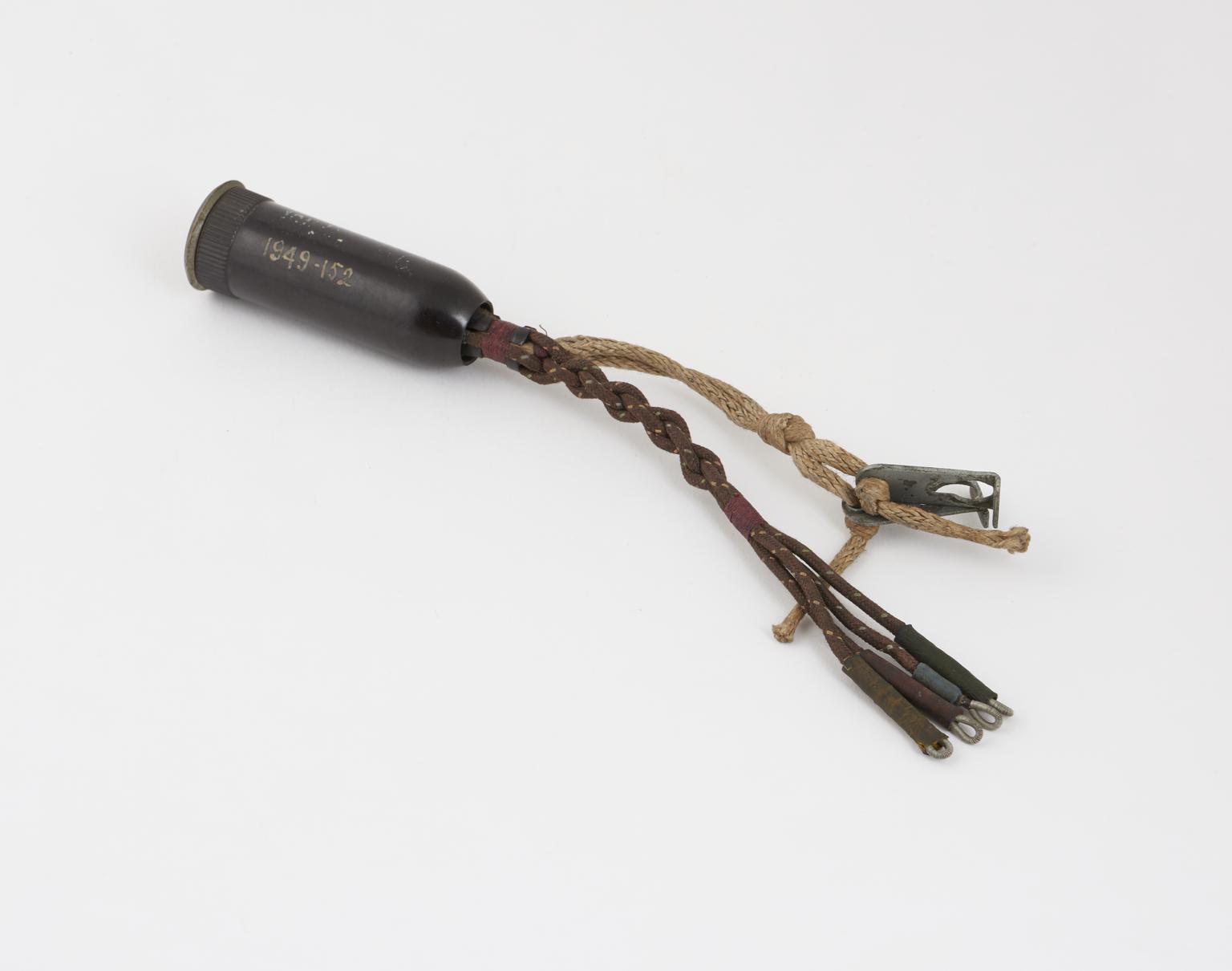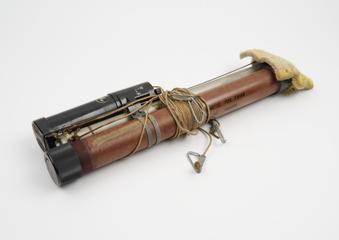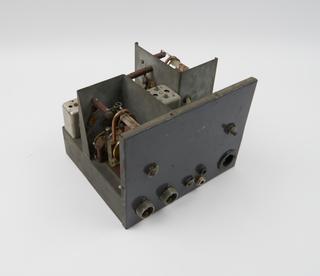Mounted components from Lorenz standard 'blind approach' radar equipment
Museum display of mounted components of Lorenz standard 'blind approach' radar equipment
More
The Lorenz system for aiding the blind landing of aircraft was developed between 1932 and 1934 and was widely adopted for both civil and military aircraft. The system employed three ground transmitters, one being the main beacon to indicate the correct landing track and the other being the inner and outer beacon respectively.
The aircraft receiving equipment comprised of: the main beacon receiver, a 6-valve superheterodyne operating between 305-40.4MHZ and the marker beacon receiver, a simple instrument operating on 38MHz. In addition, the equipment included a visual indicator, a control unit, and a power unit.
When approaching an airfield along the beacon, the pilot would hear a succession of dots or dashes according to whether they were to the left or right of the centre line of the beam. When exactly in the centre of the beam, the pilot would hear a continuous note. As the pilot approached the airfield and at a range of about two miles, they would receive a distinctive signal as they passed over the outer marker beacon. Another distinctive signal would be received as they passed over the inner marker beacon at a range of about 3/4 mile from the airfield.
- Object Number:
- 1949-152 Pt1
- type:
- radar equipment








